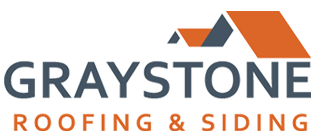Benefits of Insulating the Exterior of Your House Before Installing Vinyl Siding
Insulation is very beneficial for your home, especially if you’re looking to add value to it. In a few years many homeowners can potentially re coup the cost paid and can add $1000-$1500 in investments. Energy efficiency is also an added bonus to installing new insulation behind the newly installed vinyl siding. Most likely you’ll reduce your energy bills by installing more insulation. Many older homes have less insulation than homes constructed nowadays, but even adding insulation to a newly constructed home can pay for itself in only a few years.
To determine whether you should insulate the exterior portions of your home, you need to find out how much of your home is already insulated and what type of insulation was used. A qualified professional can easily assist you when potential questions or concerns arise. There are many different types of insulation and being familiar with different characteristics of each is very important.
Most professionals will recommend installing an insulation that has reflective foil on both sides. This type of insulation is most effective at preventing downward heat flow and is suitable for adequate spacing between the exterior walls of your home and the vinyl siding. Reflective foil insulation is also measured by it’s R-value. R-Value prevents heat loss by using conduction, and is a measure of resistance to heat flow through a given thickness of material. The higher the R-value of the insulation, the greater the resistance of the insulation. Insulation in the exterior walls of your home has an R-Value of around 19 and is a great source of natural heat storage.
Another factor when seeking new insulation is its thickness. Wider insulation can “pack out” your exterior walls, past your window frames which can sometimes create an issue to where your windows look sunk into the siding on your home. It’s important to find a product that’s about a half inch thick with R-Value. The half inch thickness won’t “pack out” past your window frames but will still provide the necessary heating/cooling factors needed.
Another important tip is not to wrap your home. A lot of new homes are being installed with insulation so tight that they need to have ventilation systems built in to allow air to flow in and out properly.
In conclusion, insulation behind siding can be an added bonus and great selling point to any home, new or old. It’s very important to do your research and become knowledgeable on types of insulation products, their R-Value and the thickness of the product. Contacting a professional will not only help better your knowledge but proper evaluations and recommendations can be made for your individual needs.
For further professional assistance please feel free to contact us at 717-725-7170 or visit our contact page
